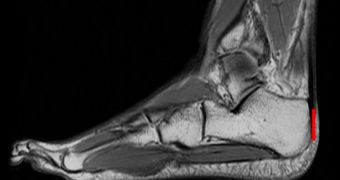Investigators suggest in the conclusions of a new research that our Stone Age ancestors may have been the first to develop the bodily traits necessary for long runs, including spring-loaded heel bones.
According to the team behind the work, hominids living at the same time, such as Neanderthals, did not feature this ability, and were therefore a lot less effective at sprinting and running over long distances.
But the Neanderthals excelled elsewhere, experts believe. Studies indicate that the back of their feet were tremendously well adapted to power walking, a lot more so than our Stone Age ancestors.
The most critical component of the leg when it comes to running fast and efficiently is the Achilles tendon, which acts like a spring. In addition to providing the force needed to propel the entire body, it also plays a role in conserving and recycling the energy used for this task.
Early modern humans featured a short lower heel that stretched the tendon under tension. This adaptation is one of the things that allowed our direct ancestors to prevail over their Neanderthal contemporaries in the evolutionary race.
Due to the new arrangement of the heel/Achilles tendon system, Stone Age humans could take extended excursions, explains University of Arizona in Tucson (UAT) anthropologist David Raichlen.
Details of the new investigation appear in a paper that will be published online in January 26 issue of the esteemed scientific Journal of Human Evolution, Science News reports.
“We can say that energy costs of running differed between Neandertals and modern humans, but our data don’t really speak to the question of what happened to the Neandertals,” Raichlen adds.
He says that evidence suggest Neanderthals had a rather tall heel bone, which means that they were a lot less energy-efficient while running. Naturally, this implies that they got tired faster, could not engage in sustained effort, and therefore traveled less than our direct ancestors.
But the taller heel bone allowed the Neanderthals to jump better than our ancestors, and also to walk uphill with less effort. In the end, natural selection chose our adaptation as the most suited for survival.
The new investigation “provides a new line of evidence that Neandertals were not as adept at long-distance running as modern humans were,” says Hunter College in New York City anthropologist Herman Pontzer, who was not a part of the new investigation.

 14 DAY TRIAL //
14 DAY TRIAL //